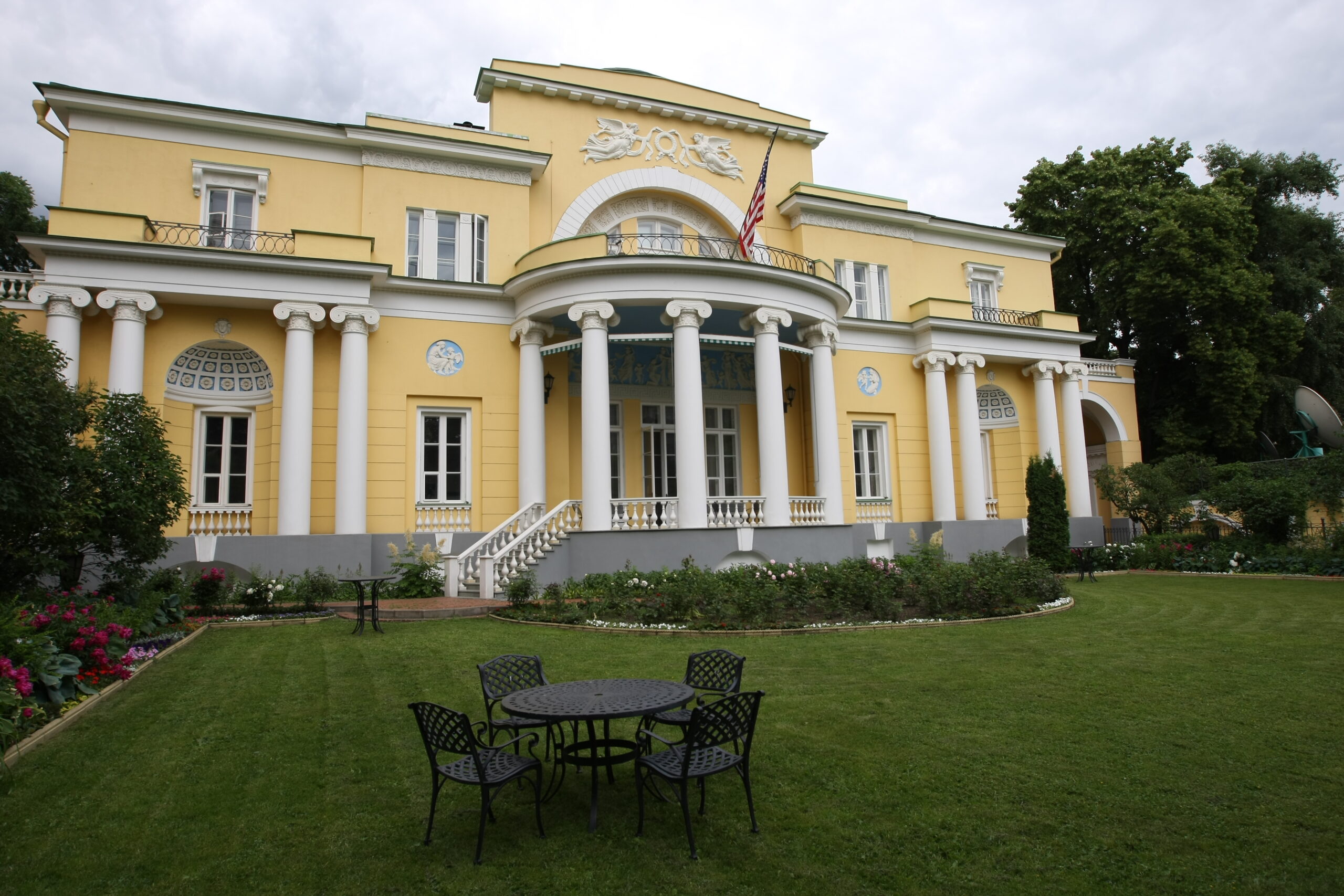Exterior of Spaso House, residence of U.S. Ambassador in Moscow. Photo: U.S. Embassy Moscow photographer Valeriy Yevseyev. U.S Embassy Moscow.
“The Thing”, also known as the Great Seal bug, is a significant artifact in the history of espionage. It was one of the first covert listening devices (or “bugs”) to use passive techniques to transmit an audio signal. It was a masterpiece of Cold War espionage.
The device was invented during WWII by Lev Sergeyevich Termen, better known as Léon Theremin, a Russian inventor, and was concealed inside a “gift of friendship” given by the Soviet Union to W. Averell Harriman, the United States Ambassador to the Soviet Union, on 4 August 1945. This gift was a hand-carved replica of the Great Seal of the United States. In was a 1940s Trojan Horse. It was never on display in the U.S. Embassy but was likely stored in several locations before it found a permanent home in the ambassador’s residential library.
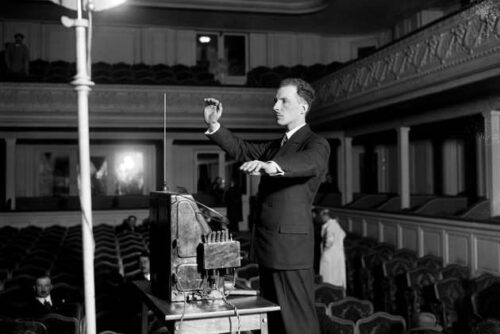
Design and Operation
“The Thing” consisted of a tiny capacitive membrane connected to a small quarter-wavelength antenna; it had no power supply or active electronic components. The device, a passive cavity resonator (or passive repeater), became active only when a radio signal of the correct frequency was sent to the device from an external transmitter, referred to as “illuminating” the device..
Sound waves (from voices inside the ambassador’s library) passed through the thin wood case, striking the membrane and causing it to vibrate. The movement of the membrane varied the capacitance “seen” by the antenna, which in turn modulated the radio waves that struck and were re-transmitted by “The Thing”. A receiver demodulated the signal so that sound picked up by the microphone could be heard, just as an ordinary radio receiver demodulates radio signals and outputs sound.
When the Russians knew that an important meeting would take place, they illuminated the bug (activating it with a strong RF beam) from a nearby building or van. A receiver, tuned to the bug’s resonant frequency, was then used to pick up the conversation in the ambassador’s Moscow residential library. This way, the Russians kept the device operational for no less than seven years.
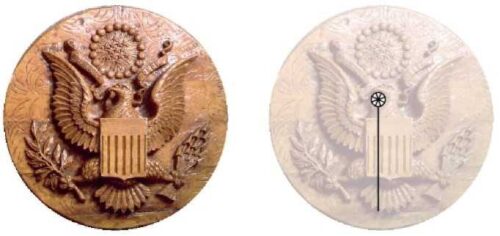
Discovery
The existence of the bug was discovered accidentally in 1951 by a British radio operator at the British Embassy. The operator overheard American conversations on an open Soviet Air Force radio channel as the Soviets were beaming radio waves at the ambassador’s library.
In 1952, during the tenure of Ambassador George F. Kennan, the U.S. State Department finally discovered the bug. The bug was found hidden inside the wooden carving behind the ambassador’s desk. Tiny holes in the wood under the eagle’s beak guided the sound to the membrane of the bug that was mounted just behind it. The discovery of “The Thing” was kept secret for many years until it was revealed during the 1960 U-2 incident at a meeting of the United Nations Security Council (UNSC) by U.S. Ambassador to the United Nations (UN) Henry Cabot Lodge, Jr.
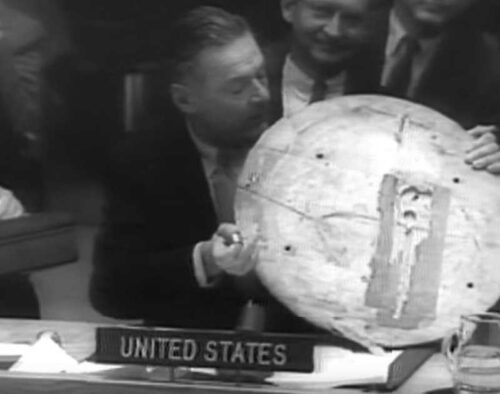
After “The Thing” was discovered, it was carefully examined. The membrane of The Thing was extremely thin and was damaged during handling after its discovery. It was replaced and the device was made operational again.
The discovery of “The Thing” led to significant advancements in counter-surveillance technology. The British developed a similar system codenamed SATYR, which was used throughout the 1950s by the British, U.S. Canadians, and Australians. There were later models of the device, some with more complex internal structure.
A replica of the original device is now on display at the National Cryptologic Museum of the National Security Agency (NSA) in Annapolis Junction, MD. It serves as a testament to the ingenuity of its inventor and the complexities of international espionage during the Cold War era.
Impact on U.S.-Soviet Relations
The discovery of “The Thing” had a significant impact on U.S.-Soviet relations. It was a stark reminder of the ongoing espionage activities and the mistrust that characterized the Cold War era.
The incident highlighted the sophistication of Soviet spying capabilities, which led to increased vigilance and counter-espionage efforts by the U.S.. It also underscored the need for improved security protocols within sensitive government installations.
The public revelation of “The Thing” during the 1960 U-2 incident further strained relations between the two superpowers. The U-2 incident involved the shooting down of a U.S. spy plane over Soviet airspace, leading to an international diplomatic crisis.
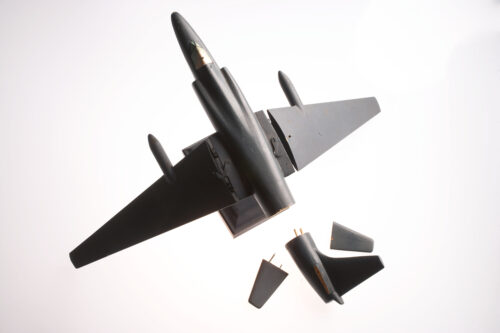
Legacy
The design features of “The Thing” made it very difficult to detect because it was very small, had no power supply or active electronic components, and did not radiate any signal unless it was actively being irradiated remotely. These same design features, along with the overall simplicity of the device, made it very reliable and gave it a potentially unlimited operational life.
“The Thing” represents a remarkable achievement in espionage technology. Its innovative design and operation principles set a precedent for future developments in covert listening devices. Even today, it serves as a reminder of the ingenuity and resourcefulness that characterized Cold War-era espionage.
Resource
National Cryptologic Museum
NSA.gov
*The views and opinions expressed on this website are solely those of the original authors and contributors. These views and opinions do not necessarily represent those of Spotter Up Magazine, the administrative staff, and/or any/all contributors to this site.

